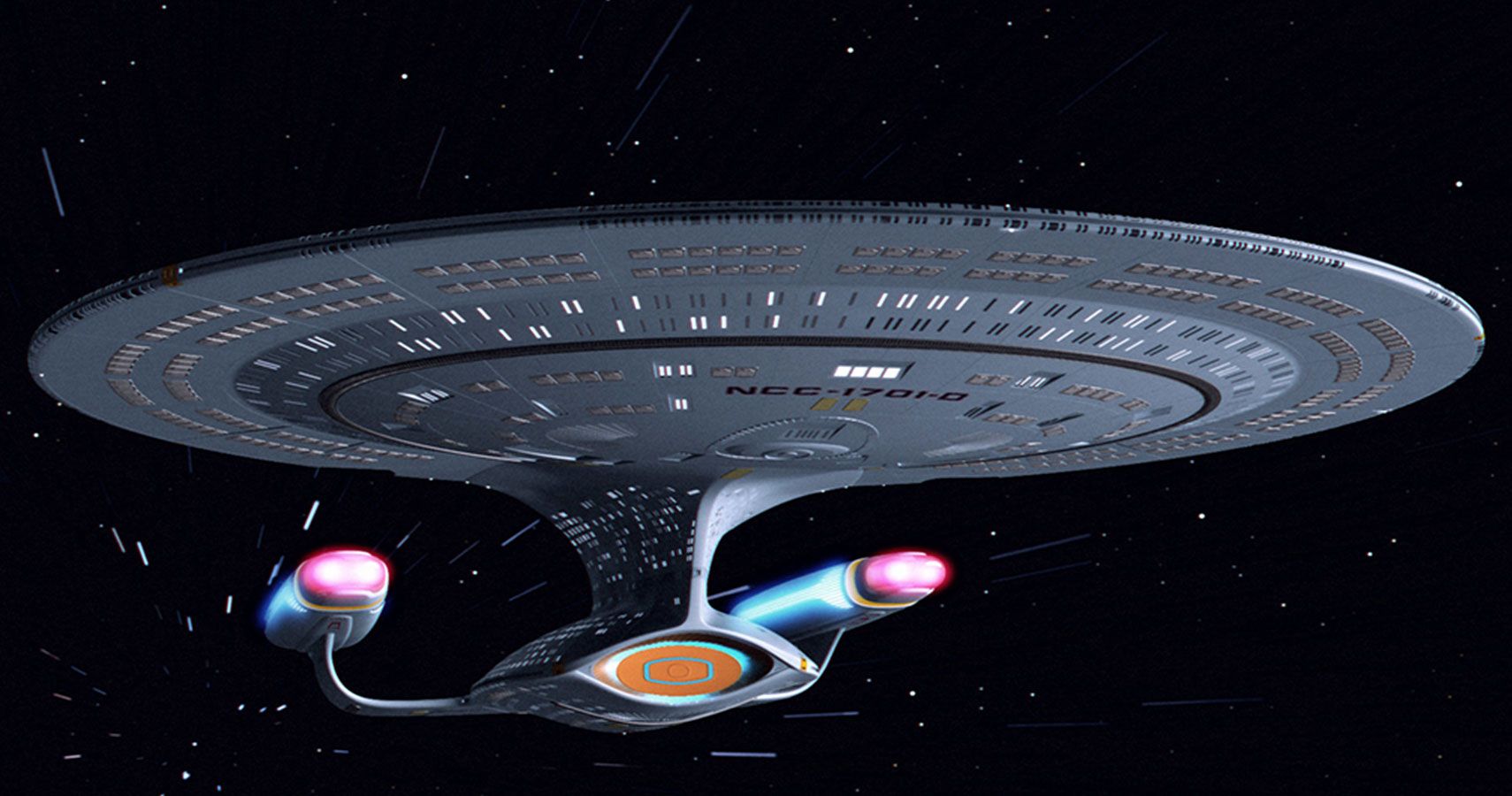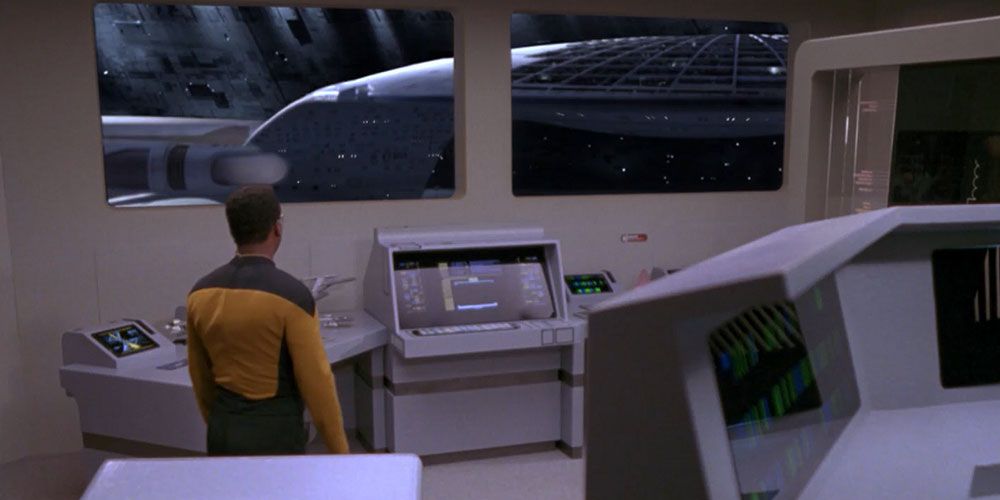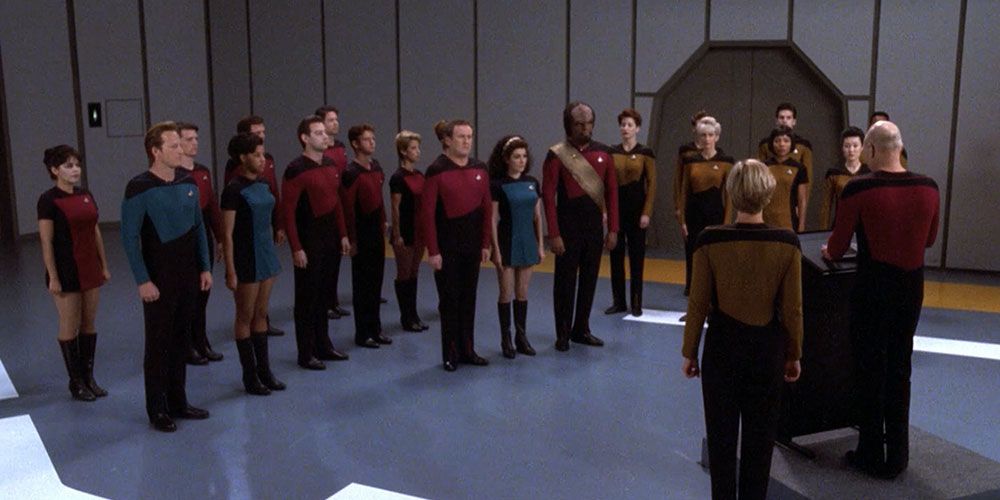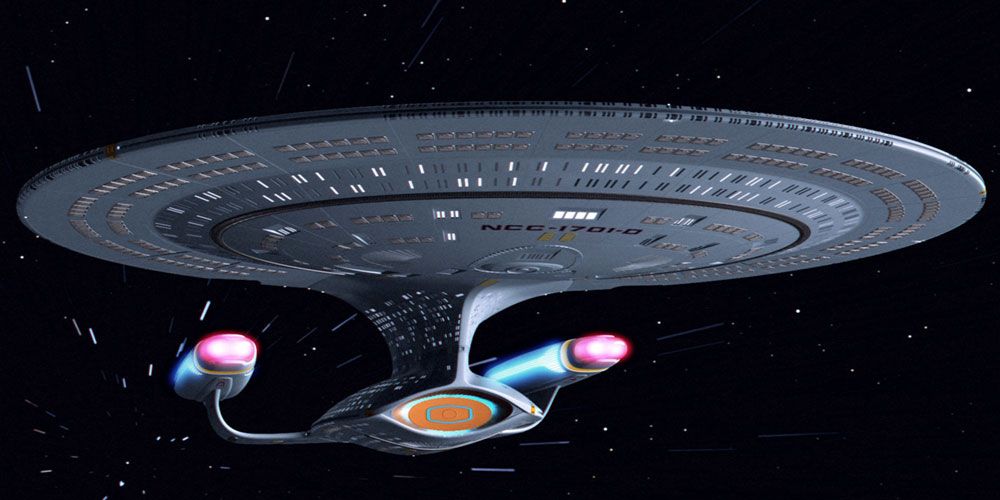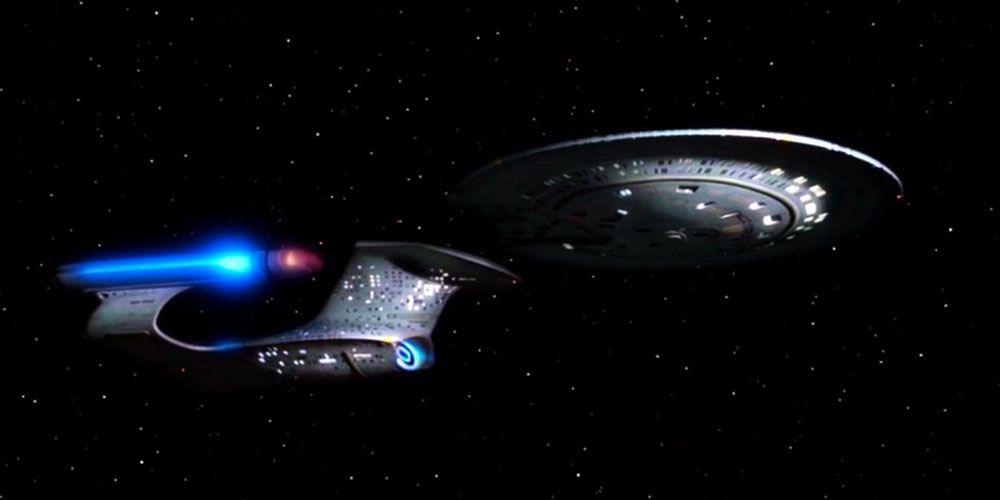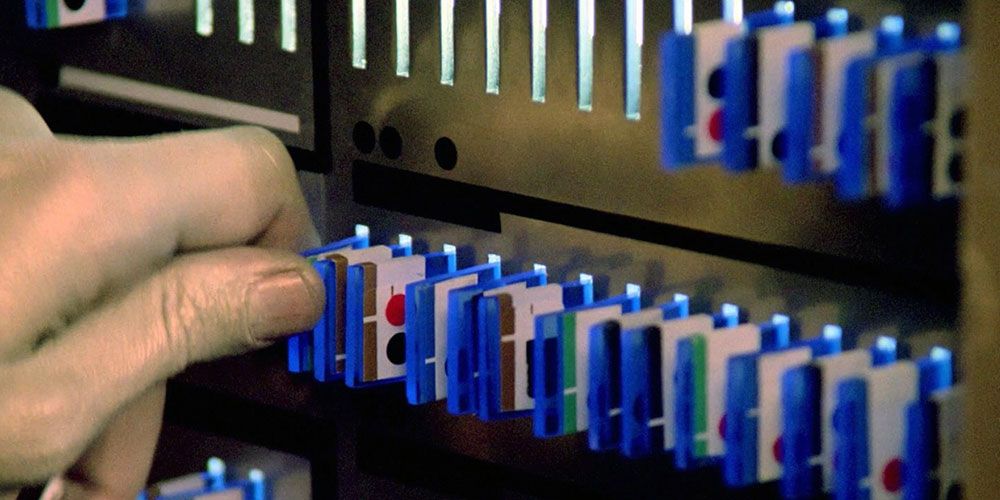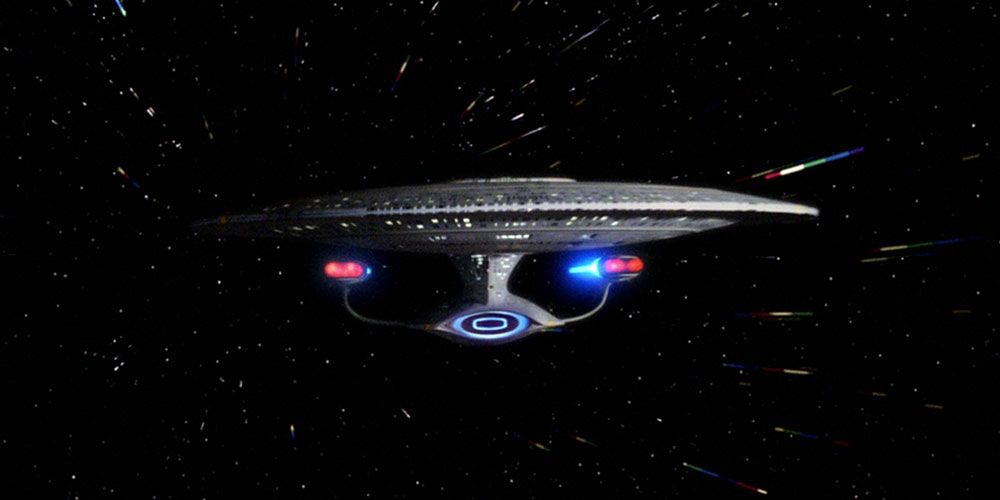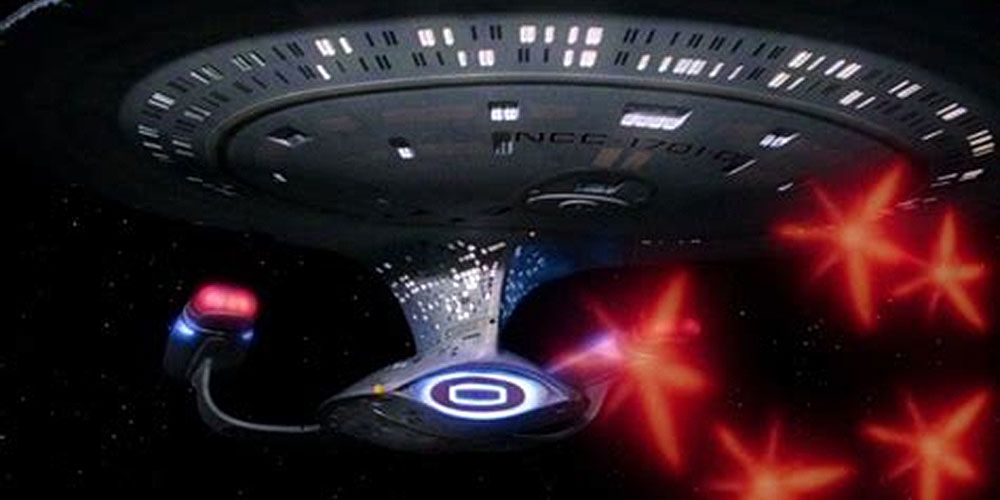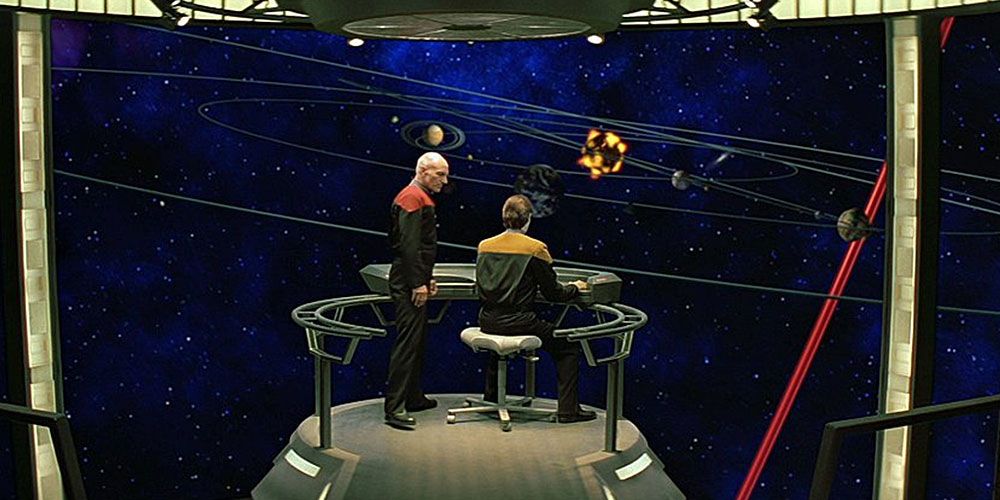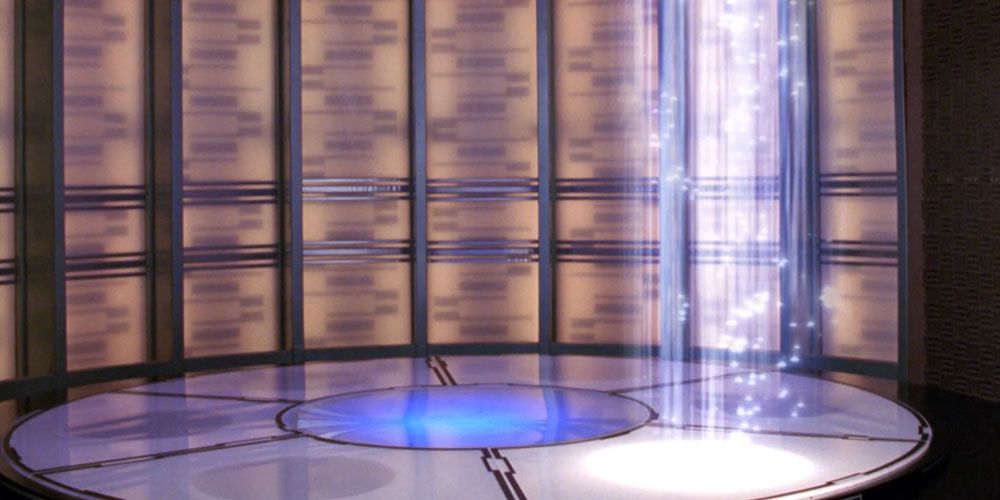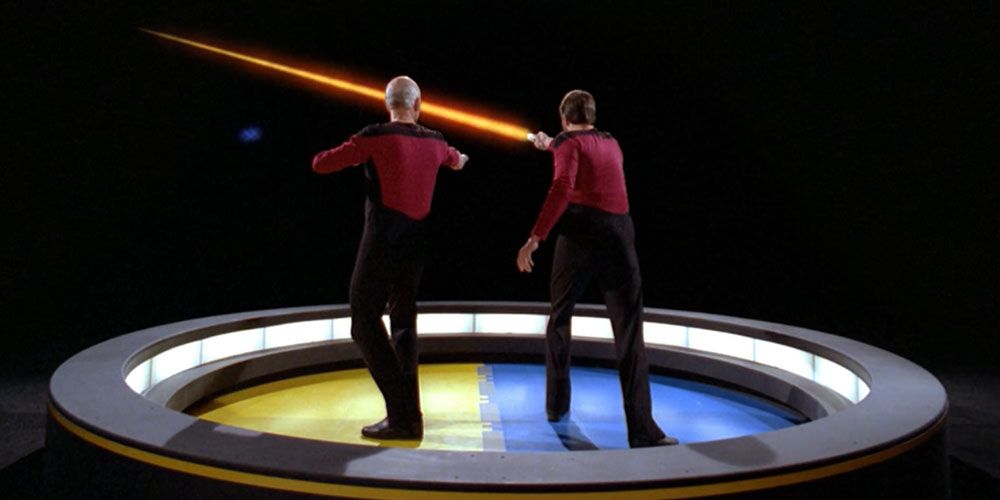When Star Trek: The Next Generation debuted way back in 1986, it featured a much different Enterprise than the one Trekkers were used to from the original series and the subsequent film franchise. This Enterprise was sleeker, curvier, and far more technologically advanced than anything that came before it.
NCC-1701-D was, in fact, a Galaxy-class starship. This was a remarkable step forward in Federation technology which helped propel them to even further unexplored regions of the galaxy, but what exactly went into the design of this fancy new starship?
Design Locations
The Galaxy-class Starship was not designed under one roof, but several. While primary design took place at the Utopia Planitia Fleet Yards, its warp core was designed at the Seran T-1 outpost. This broke up the process and compartmentalized its design across multiple teams.
Much of the technologies that would find their way into the Galaxy-class design were tested on prototype ships including the USS Pegasus, notorious for its attempt to perfect phased cloaking technology in direct violation of the Federation's Treaty of Algeron with the Romulans.
Bragging Rights
Being assigned to a Galaxy-class Starship was considered a prestigious honor among Starfleet personnel, perhaps because of its advanced technology and bold design that signaled a "refresh" in Starfleet's approach to deep space exploration. It represented a paradigm shift that would attract a new generation of Starfleet's best and brightest.
Due to the nature of its highly skilled personnel, it has been theorized that Starfleet green-lit families to be allowed on board in an attempt to attract the best talent. This would make sense given the family-centric design of this class of Starship.
Dimensions
The Galaxy-class Starship spanned an overall length of 641 meters, an edge-to-edge width of 473 meters, and a height of approximately 133 meters. This size gave it a remarkable advantage both from a military perspective, and a diplomatic one as well.
The ship carried a crew of 1,012 officers with the ability to evacuate 15,000 people if required. The Next Generation episode Yesterday's Enterprise shows that the Starship was capable of gutting its internal space to allow for a combat troop capacity of 6,000 if required.
The Saucer Section Has No Warp Drive
Several TNG episodes show the saucer section of the Enterprise-D separating from the primary hull and sustaining travel at warp velocity for an extended period of time. This has confused many Star Trek fans over the years given that this should not be possible due to the lack of warp engines on the saucer section.
The Star Trek: The Next Generation Writers' Technical Manual, Fourth Season Edition cleared this up by explaining that while the saucer section indeed has no warp drive, it is capable of sustaining a warp field during separation at warp speed which will collapse soon after. Essentially, the saucer section rides the wave of a warp field before slowing down to sub-light speeds.
Isolinear Circuitry
The Galaxy-class designers geeked out fully when it came to designing the circuitry that would power their new Starships, and they chose isolinear as the preferred method. These versatile chips replaced duotronic enhancers that were prevalent in Starfleet vessels prior to retirement in the 24th century.
Isolinear chips were used to regulate a multitude of devices including PADDs, computer systems and even a ship's warp drive. They were also used as a storage medium.
Maximum Speed
Galaxy-class Starships broke new ground when it came to propulsion. They sported three impulse engines for sub-light travel which gave it excellent maneuverability, as well as a warp drive with a maximum speed rating of warp 9.65.
This made it the fastest class Starship in the fleet which proved invaluable during several altercations with foreign species, including the Borg. A maximum warp of 9.8 was also theorized, but that was well past the red-line of 9.3, and therefore extremely dangerous.
Weapons Systems
Deep space exploration comes with many risks, and Galaxy-class ships were well stocked for any battle. They shipped with 12 phaser banks that could be fired in multiple sequences and arrays depending on the target(s) in question, as well as highly advanced proton torpedo launchers that could fire five at a time with independent targeting for each.
Its main deflector dish could also be converted into a weapon by drawing power directly from the energy build-up of the warp core and channeling it into a massive burst. This tactic was used against the Borg during the first invasion of Earth but was countered due after Jean-Luc Picard was assimilated and the plan was brought to the attention of the collective.
Secondary Sections
The Galaxy-class Starship was easily recognizable for its distinct exterior shape as well as its internal decks and sections, but few Star Trek fans are aware of secondary areas rarely glimpsed in The Next Generation. These include a Morgue, Stellar Cartography, a Cybernetics Lab, and Cetacean Labs.
Some of these areas were glimpsed in episodes of the show, while others like Stellar Cartography made their debut in Star Trek: Generations. They're easily forgotten parts of the ship that saw perhaps one or two uses before being mothballed by the writers.
Transporter Rooms
The Next Generation allowed fans a glimpse at the primary transporter room and a few others peppered around the ship. As such, it was hard to gauge just how many were on board the ship at any given time. Galaxy-class Starships had a grand total of 24 transporter rooms in various parts of the ship.
Some of these transporter rooms served specific purposes, such as beaming cargo on board to be stored, while others like Transporter Room One were used to bring dignitaries and guests on board in a more luxurious setting.
Amenities
Galaxy-class Ships were a huge departure from the militaristic and sterile designs that Starfleet was previously known. These were luxurious living spaces with plenty of room for culture and interaction between officers, family, and friends. These included a gymnasium, a theater and concert hall, holodecks, phaser ranges, and of course, Ten Forward, the social hub of the ship.
They even had schooling facilities onboard to educate children brought on board to live with Starfleet officer parents. In many ways, the Galaxy-class Starship was the first vessel to ease up on duty restrictions in favor of a more harmonious work/life balance.

